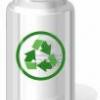I had the same issue here with Nowak.
Our original version of HACCP study included 1 CCP (molds) for the finished products.
The said HACCP study was 'scrutinized' by a food safety auditor during one of our second party audits and as a result, we conducted a general review of the hazard analysis and it turned out that the 'likelihood' based on past records is minimal. So everybody in the review panel agreed to downgrade the CCP to OPRP.
Right now, we are still monitoring the telltale humidity of the warehouse and provided the controls needed to bring it down to non-critical level for mold growth.
I believe the 'name' (CCP, PRP, OPRP) is not that important as much as the recognition that you identified it as a hazard and has actually done something to control it.
Let's live the spirit of the standard, not just the letters.

Dear MCIAN,
Thks for the input.
I deduce your company are using ISO 22000.
As you no doubt know the topic of the difference between
CCPs and OPRPs is still highly subjective after 8 years of the unrevised original standard. Possibly even more subjective than
CCPs.

I won’t query yr FS assessment team’s conclusion since it depends on the specific details however I should just mention that some opinions exist that a hazard which is considered to have an insignificant risk (Lik. x Sev.) is not suitable to be categorised as either a
CCP or an OPRP.
Perhaps a QCP is equally appropriate since IMHO, this label, in the most general sense, can be applied to a (non-Codex

) "hazard" of any type, whether related to safety or not.

Rgds / Charles.C
PS - @B.Nowak, Regarding yr original query, I think George's post# 9 is the key, it really depends on the details, eg what hazard the temperature control is relating to ?




















